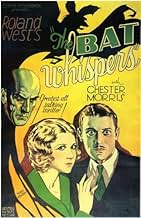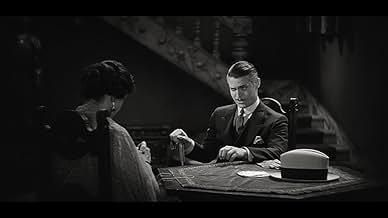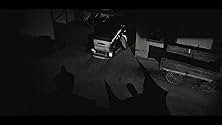CALIFICACIÓN DE IMDb
6.3/10
1.4 k
TU CALIFICACIÓN
Agrega una trama en tu idiomaA master criminal terrorizes the occupants of an isolated country mansion.A master criminal terrorizes the occupants of an isolated country mansion.A master criminal terrorizes the occupants of an isolated country mansion.
- Dirección
- Guionistas
- Elenco
- Premios
- 2 premios ganados en total
- Dirección
- Guionistas
- Todo el elenco y el equipo
- Producción, taquilla y más en IMDbPro
Opiniones destacadas
Based on a play that was filmed four years earlier by the same director this is a wonderful film that is hampered only by the limitations of sound. That said this is probably the best version of the story.
A fiend known as The Bat is lurking around the mansion of a rich family and its up to an intrepid detective to prevent him from getting the goods.
This movie is a lot of fun, with several wonderful performances especially by Chester Morris as the detective.
Interestingly the film was filmed both in the standard aspect ratio and in an early wide screen process (Both are on the DVD). The films are more or less identical, but since they were taken from different takes they both play like two different nights of the same play.
I like this film a great deal and recommend it to anyone who likes the Old Dark House genre.
A fiend known as The Bat is lurking around the mansion of a rich family and its up to an intrepid detective to prevent him from getting the goods.
This movie is a lot of fun, with several wonderful performances especially by Chester Morris as the detective.
Interestingly the film was filmed both in the standard aspect ratio and in an early wide screen process (Both are on the DVD). The films are more or less identical, but since they were taken from different takes they both play like two different nights of the same play.
I like this film a great deal and recommend it to anyone who likes the Old Dark House genre.
This is a great old black and white mystery/suspenser. If you have the capacity to enjoy films of the 30's and 40's and you like mysteries and fine film craftsmanship, see his movie. Chester Morris is very good as the lead. The plot is relatively true to the Hopwood/Rinehart original screenplay. The setting is an old mansion with a spinster and family members terrified by a super criminal known as the Bat. They get outside help, but the Bat strikes anyway. Who is the Bat? What does he want in the old mansion? The story answers those questions in a most old-fashioned, entertaining manner. Of the three movie versions of the Bat, the 1926 silent, the 1950's Vincent Price/Agnes Moorhead version, and this one, this is the best.
A tour-de-force of chases, shootouts, and robbery, as "The Bat" terrorizes a city, and particularly the renters of a mansion where he makes his hideout. Nearly everybody is a suspect, but the key lighting pretty much gives it away. Nonetheless, West keeps the pace moving so fast that we don't really have time to stop and think about much of anything. Features West's trademark effects with miniatures and wires.
Some remarkable photography (in 65mm, no less) in the disappearing silent gothic tradition makes this movie a link from the newly emerging horror scene to the old "haunted house with criminals" genre into which it more properly falls.
"Goofy gothic" excellence.
Some remarkable photography (in 65mm, no less) in the disappearing silent gothic tradition makes this movie a link from the newly emerging horror scene to the old "haunted house with criminals" genre into which it more properly falls.
"Goofy gothic" excellence.
Roland West first filmed the story of the Bat, a killer that steals money and jewels for their value as well as for adventure, in 1926. He then made The Bat Whispers in 1930, which is a sound version of his silent film. The transition is not entirely smooth yet rewarding. Let me first state that the silent film is easily the superior of the two. The silent film had a much more creepier feeling to it. The acting was far superior, and the sets were incredible. West does duplicate much of the sets and shots that were in his first version. The acting, however, is not very good as it is obvious that sound pictures have not been around too long. West tries to accommodate that new innovation which sometimes results in stagey scenes and long dialogue sessions. Chester Morris is...well, to say the least...a ham. His performance is a bit over-the-top for me. He does show glimmers of talent though. The story is pretty much the same and that is the film's strength. It's a fun mystery that by today's standards will seem crude and silly, but taken in context of its time should provide some entertainment. Oddly enough, the mystery seemed less mysterious in this version. I knew who the killer was with ease(trying to distance myself from the memory of the first film as I did this). West again has some impressive camera shots. The opening scene of the bat stealing a jewel from an apartment high in the sky was incredible as was the journey of the bat over a bank and following a man with a lot of money. The camera work of West is innovative, and it is a pity that his life was cut short and we did not get a chance to see him employ his talents in other projects.
No doubt about it, the silent screen acting technique is still present in this early talkie. Everyone behaves as though they had a case of first night stage jitters--and the supposedly comic moments are painfully obvious and tainted with smokehouse ham.
But aside from the theatrics of some of the cast, this is an entertaining and truly spooky old dark house kind of comedy-mystery that was so popular during the '30s and '40s. What is most amazing is the fluidity of the camerawork through the innovative use of miniatures and the camera's ability to zoom forward and slink along the exteriors of an old mansion like a prowling cat. It is worth seeing alone for the atmospheric sets and photography, especially considering that this was filmed in 1930 when sound itself was only two years old.
Only Chester Morris among the performers delivers a really credible performance acceptable by today's standards of acting. The others are way over the top--including Una Merkel and just about all of the supporting players with the exception of William Bakewell.
If you're a fan of Mary Roberts Rinehart stories, you'll enjoy this version of her successful play. It's far superior to the later remake with Vincent Price. Be sure to see this in the newly released Wide Screen Version. It's a pristine transfer from the restoration by the UCLA Film and Television Archive.
But aside from the theatrics of some of the cast, this is an entertaining and truly spooky old dark house kind of comedy-mystery that was so popular during the '30s and '40s. What is most amazing is the fluidity of the camerawork through the innovative use of miniatures and the camera's ability to zoom forward and slink along the exteriors of an old mansion like a prowling cat. It is worth seeing alone for the atmospheric sets and photography, especially considering that this was filmed in 1930 when sound itself was only two years old.
Only Chester Morris among the performers delivers a really credible performance acceptable by today's standards of acting. The others are way over the top--including Una Merkel and just about all of the supporting players with the exception of William Bakewell.
If you're a fan of Mary Roberts Rinehart stories, you'll enjoy this version of her successful play. It's far superior to the later remake with Vincent Price. Be sure to see this in the newly released Wide Screen Version. It's a pristine transfer from the restoration by the UCLA Film and Television Archive.
¿Sabías que…?
- TriviaOne of only a handful of films to be shot in the widescreen Magnifilm 65mm format (other studios were also experimenting with other wide formats at the time). The expense of upgrading theaters with new screens and projectors - after just having to install sound equipment - coupled with the Depression and the December 1930 edict from the MPPDA that the film industry not cause "the public's curiosity to be aroused about any new innovations for at least two years" effectively killed the new format. Widescreen formats did not return until the middle of the 1950s out of the necessity to compete with television.
- ErroresAfter the bank robbery, there is a obvious slot in the "road" where the miniature car travels.
- Citas
The Unknown: What I'd like to know is how did you get the dope from headquarters on this case?
Detective Anderson: The same way I get everything, with my mind. I've got the greatest brain that ever existed.
- Créditos curiososAfter the film an actor comes onto a movie house stage and implores the audience to withhold the identity of the bat from family and friends so they can also enjoy the movie.
- Versiones alternativasThis film was shot in two versions with a different director of photography for each. One is in standard 35mm and the other in an early 65mm process. The 65mm version is considered "stagebound" (it was actually based on a popular play) while the 35mm version is considered more "cinematic". Prints of both versions still exist.
- ConexionesFeatured in Cinemassacre Video: Bat-a-Thon (2008)
Selecciones populares
Inicia sesión para calificar y agrega a la lista de videos para obtener recomendaciones personalizadas
- How long is The Bat Whispers?Con tecnología de Alexa
Detalles
- Fecha de lanzamiento
- País de origen
- Idioma
- También se conoce como
- Roland West's The Bat Whispers
- Productora
- Ver más créditos de la compañía en IMDbPro
- Tiempo de ejecución1 hora 24 minutos
- Color
- Mezcla de sonido
Contribuir a esta página
Sugiere una edición o agrega el contenido que falta

Principales brechas de datos
What is the Spanish language plot outline for The Bat Whispers (1930)?
Responda






























